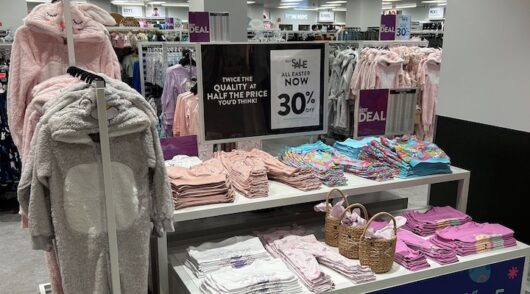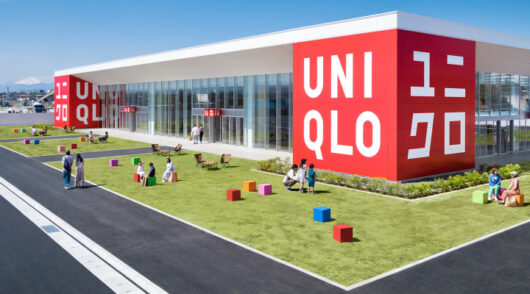New research from Combank shows a growing divergence between Australian consumers who say they’re comfortable and those who say they’re doing it tough, irrespective of their financial situation.
The research comes from the latest edition of Commonwealth Bank’s Consumer Insights Report 2023 which confirms that the cost of living and interest rates are hitting consumers hard; more than a quarter of respondents surveyed said they are “doing it tough” at the moment.
“When we dig deeper, we see that there’s this two-speed retail landscape developing with a real clear difference in behaviour,” says David Martin, national manager – retail & e-commerce with Commonwealth Bank.
Talking to Inside Retail’s Amie Larter for the latest episode of the podcast series Retail Untangled, Martin explains that most consumers are cutting back and have changed their spending habits. Specifically, they are seeking more value – to get “more for the same or more for less”.
“They’re being a lot more discerning with their discretionary dollars. So clearly that cost of living pressure is hitting consumers who are shifting and reallocating money, which is probably no surprise during a tough time.”
He says younger generations who are holding more debt are reducing spending however in contrast, some of the older generation with greater deposits are getting a better return on their cash and “living it up a little bit more”.
Among those cutting back on spending, “it’s all about reallocation,” says Martin.
“We are finding that consumers are more discerning now. On average, $450 a month is being shifted towards essentials and across every generation it’s a little bit different, but the youthful Gen Y are shifting the most around to cover things like their mortgages, rent and childcare. Baby boomers are shifting the least and they’re doing that to pay bills to meet healthcare costs or to save.”
Martin says that despite challenging times, consumers are seeking to maintain their standard of living. That motivates them to seek deals from retailers and to make lifestyle adjustments in order to maintain that standard of living.
“The best example from the report is that around 25 per cent of Gen Z respondents are saying that they’re reallocating money to entertainment so they can keep going out and having a good time. I guess, the social angle is that people don’t like missing out. They want to keep doing what they can and they’ll sacrifice accordingly.”
So how should retailers respond? Martin advocates focusing on luring traffic and driving conversion to ensure they maximise sales – and to plan for that to be a long-term strategy because he sees the trend enduring.
“Price pressures are here to stay, so right now while retailers have to be competitive, it is really important that retailers focus on how they are adding value around those prices,” he says.
Defining that value is the challenge retailers must meet, with the research results regarding consumer expectations, in Martin’s words, “fascinating”.
“Essentially what we’re seeing is that not all incentives are the same and not all are valued by a consumer. On top, probably unsurprisingly, was free shipping and I think that is now almost table stakes for anyone with a digital presence. But 68 per cent of our samples said that was in their top three and for 37 per cent, it was their first preference.
“So figuring out how to make the economics work for free shipping over the lifetime value of the customer clearly is quite important for a retailer. But those were closely followed by a couple of other surprising ones. Discount codes and promo codes were second at 60 per cent and a rewards points program rounded out the top three at 52 per cent.”
At the other end of the scale came another surprise. Donations to charity were the biggest loser, with 85 per cent of people ranking it among their bottom three choices and 55 per cent last.
“So if you’re a brand that’s looking at saying, ‘Hey, we’re going to make you feel good by doing something good on your behalf’, maybe rethink that – or at least rethink it as a huge volume driver. It might be nice for some, but not for everyone.”
Martin said it is clear that people do not really value free invites to special events – that ranked second last, behind receiving a free gift with purchase.
Despite those figures, he warns against applying them across an entire customer base.
“You really need to know your customer and their demographics and have slightly different skews on each incentive. In order to speak to every customer, you have to speak their language. And a lot of the time it’s different. For example, 54 per cent of Gen Y respondents wanted a free gift with purchase, but the next highest was Gen X at 40. So there’s a big gap there. Pre-boomers – the oldest Australians – love cashback offers the most, but surprisingly only 28 per cent of Gen Y saw that as appealing.”
Equally important to offering consumers value is securing their loyalty and there, Martin says, every retailer must focus on the pain points of the customer purchasing journey.
According to the report, 58 per cent of people said they are unlikely to continue to use a retailer if they have experienced service issues – and that climbs to 69 per cent within the personal services category. “Clearly, if you get a bad haircut, you’re not going back. But it’s as low as 45 per cent for a hardware store, which is more of a non-discretionary category. The trick is clearly knowing what issues customers forgive and which ones they see as high-impact.”
The three biggest loyalty killers identified in the report were difficulty returning items, inaccurate product information online, and a poor website or app experience. “Customers told us they would be highly unlikely to return to a brand if they experienced these issues.”
Surprisingly, consumers seem more forgiving on other points retailers might worry about more often. For example, just 8 per cent of people said products being out-of-stock would deter them from returning to a retailer.
“Clearly people understand that, okay, they’re not always going to be able to get what they want. But knowing the information of the product online before I go into the store is clearly really important and a must-win factor.”
Another theme the research brought out is just how important payment choice is at the online checkout, reflecting the broad range of methods consumers are using at present. Martin says there is a challenge for retailers to offer individual customers their preferred payment methods.
“Cards are still king, but using them in conjunction with promo codes and loyalty points is an in-demand feature and an emerging trend. And then you’ve got to find ways to do that in-store and online and have a consistent experience and approach.
“The challenge for retailers is how you do this at scale. Obviously, technological investment is quite expensive whenever you’re talking about changing a checkout or even merchant terminals at the store. So finding partners who can help unlock scale is a really important thing.
“You need to find scalable ways to give the consumer their preferred way to pay. That’s what our Powerboard product does, and I think there’s going to be a lot more push in that space from digital payment providers,” Martin concluded.






